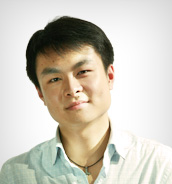注意事项
一、 将自己的校名、姓名、学校代号、准考证号写在答题纸和作文纸上。考试结束后,把试题册、答题纸和作文纸放在桌上。教师收卷后才可离开考场。试题册、答题纸和作文纸均不得带走。
二、 仔细读懂题目的说明。
三、 在120分钟内答完全部试题,不得拖延时间。
四、 多项选择题的答案一定要写在答题纸上。作文写在作文纸上。凡是写在试题册上的答案一律作废。
五、 多项选择题只能选一个答案,多选作废。选定答案后,用HB浓度以上的铅笔在相应字母的中部划一条横线。正确方法是:[A] [B] [C][D]
使用其他符号答题者不给分。划线要有一定粗度,浓度要盖过红色。六、 如果要改动答案,必须先用橡皮擦净原来选定的答案,然后再按上面的规定重新答题。
Part Ⅰ Writing (30 minutes)
注意:此部分试题在答题卡 1上。
Part ⅠWriting (30 minutes)
Directions: For this part, you are allowed 30 minutes to write a short essay on the topic of Western Festival: Welcome or Reject? You should write at least 120 words following the outline given below:
1. 西方的节日越来越深的影响着许多中国年青人的生活。
2. 有人认为西方的节日使很多中国的传统日益淡化。
3. 你的观点。
Western Festival: Welcome or Reject?
Part II Reading Comprehension (Skimming and Scanning) (15 minutes)
Directions: In this part, you will have 15 minutes to go over the passage quickly and answer the questions on Answer Sheet 1.
For questions 1-7, mark
Y(for YES) if the statement agrees with the information given in the passage;
N(for NO) if the statement contradicts the information given in the passage;
NG(for NOT GIVEN) if the information is not given in the passage.
For questions 8-10, complete the sentences with the information given in the passage.
Our dreams combine verbal, visual and emotional stimuli into a sometimes broken, nonsensical but often entertaining story line. We can sometimes even solve problems in our sleep. Or can we? Many experts disagree on exactly what the purpose of our dreams might be. Are they strictly random brain impulses, or are our brains actually working through issues from our daily life while we sleep -- as a sort of coping mechanism? Should we even bother to interpret our dreams? Many say yes, that we have a great deal to learn from our dreams.
Why do we Dream?
For centuries, we've tried to figure out just why our brains play these nightly shows for us. Early civilizations thought dream worlds were real, physical worlds that they could enter only from their dream state. Researchers continue to toss around many theories about dreaming. Those theories essentially fall into two categories:
● The idea that dreams are only physiological stimulations
● The idea that dreams are psychologically necessary
Physiological theories are based on the idea that we dream in order to exercise various neural connections that some researchers believe affect certain types of learning. Psychological theories are based on the idea that dreaming allows us to sort through problems, events of the day or things that are requiring a lot of our attention. Some of these theorists think dreams might be prophetic. Many researchers and scientists also believe that perhaps it is a combination of the two theories.
Dreaming and the Brain
When we sleep, we go through five sleep stages. The first stage is a very light sleep from which it is easy to wake up. The second stage moves into a slightly deeper sleep, and stages three and four represent our deepest sleep. Our brain activity throughout these stages is gradually slowing down so that by deep sleep, we experience nothing but delta brain waves -- the slowest brain waves. About 90 minutes after we go to sleep and after the fourth sleep stage, we begin REM sleep.
Rapid eye movement (REM) was discovered in 1953 by University of Chicago researchers Eugene Aserinsky, a graduate student in physiology, and Nathaniel Kleitman, Ph.D., chair of physiology. REM sleep is primarily characterized by movements of the eyes and is the fifth stage of sleep.
2006年12月英语四六级考试最后冲刺专题
希望与其他英语爱好者进行交流?点击进入外语论坛>>>
更多信息请访问:考试吧四六级栏目














